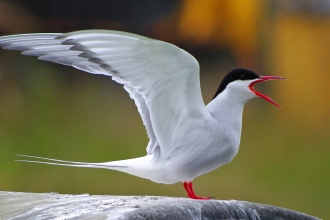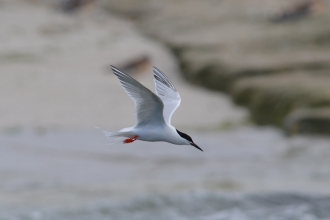
Alan Wright
Terns
What are they?
During the summer, several species of tern return to nest on our shores, and increasingly on islands and inland reservoirs. Similar to a small, elegant gull with a long swallow-like forked tail, slender wings and a black cap setting off the silvery grey plumage, small differences set the five species that nest here apart. The most widespread is the common tern, which despite its name is not actually the commonest; that title goes to the closely related Arctic tern, whose colonies nests on northern coasts and islands. Visit a tern colony but don’t get too close to the notoriously feisty tern parents. A hat may come in handy!
What do I look for?
One of the easiest ways to tell the different tern species apart is by looking at their bills. Carrot red with a black tip makes it a common tern; blood red is an Arctic tern; black with a yellow tip (together with a shaggy black crest) tells you you’re looking at a Sandwich tern; while the tiny little tern has a yellow bill tipped with black, as well as a white forehead. Beware: terns are quick to turn on intruders, so don't get too close, or perhaps just take a slightly taller friend with you.
More information
A group of Terns is called A ternery.







